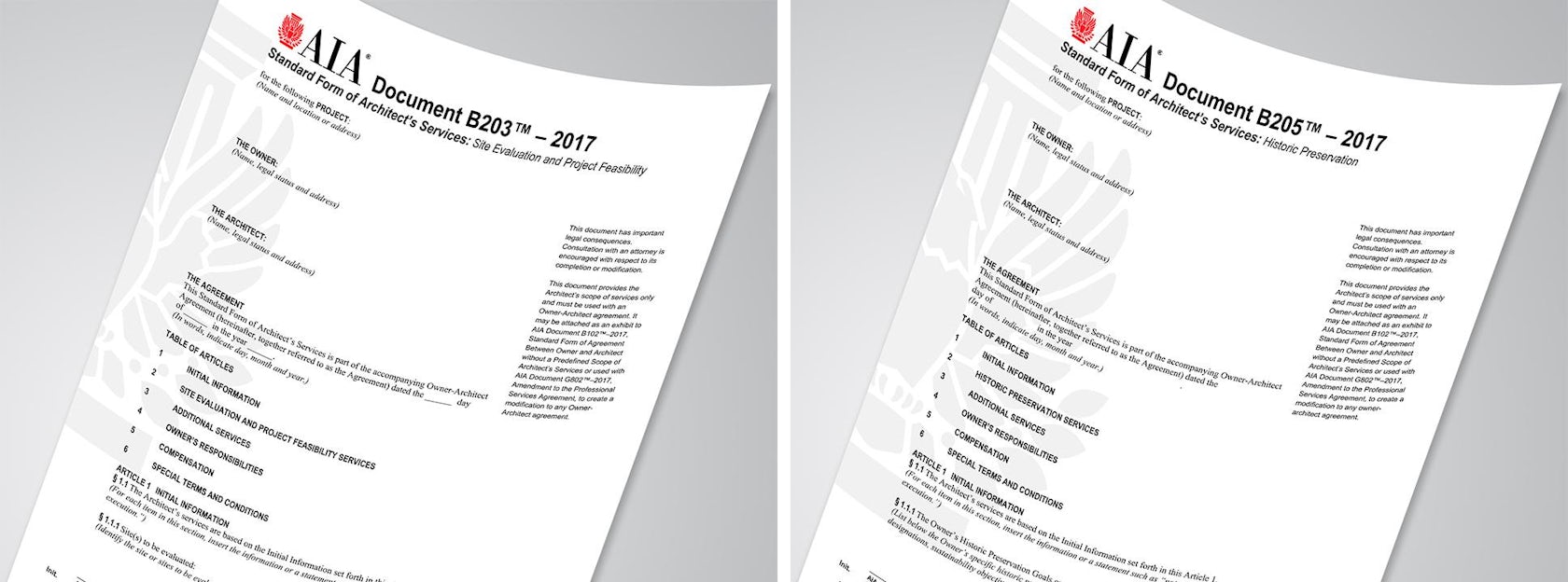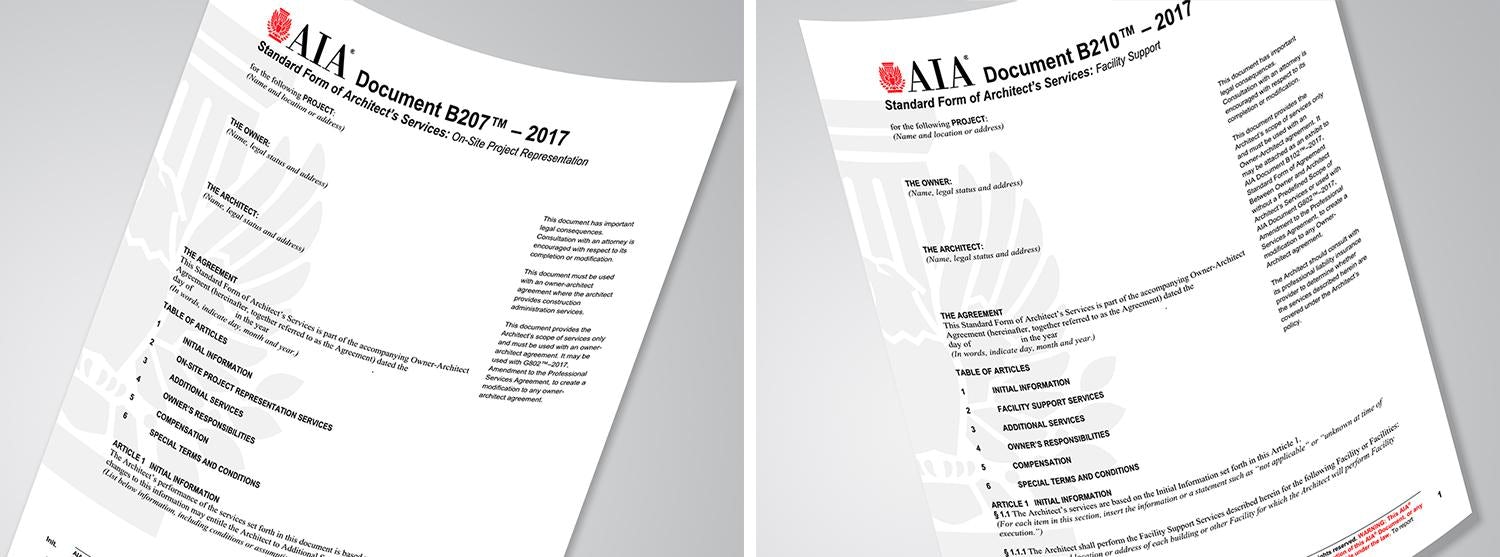This fall, the American Institute of Architects is rolling out updates to their Architect Scope Documents, a set of standards that help define the relationships and terms involved in design and construction projects, as well as their G-Series forms. These particular documents, which come months after the AIA released their latest round of contract docs and the highly anticipated Sustainability Projects Exhibit, detail the amount of support architects can give as experts on a wider array of projects. They also amp up clarification on things like change orders, project parameters and substantial completion.
Why is this information so vital to the profession? Apart from simplifying form language, making them more intuitive and easy to use throughout the lifecycle of a project, there’s recently been a growing trend in architects offering services like commissioning and historical preservation in order to expand their role in the building industry. This means that architects are seeking new challenges and becoming more diverse in their skillset than ever before. The greater the amount of work they offer, though, the greater need for specific standards set in place to help them navigate clients, projects and new responsibilities.

The Architect Scope Documents balance the allocation of risk and responsibilities between architects, owners and contractors. Here are five major updates to the B200 Series documents that professionals should study up on as soon as possible:
1. Architects can now assist the client in selecting the project site.
Per B203™-2017, Site Evaluation and Project Feasibility, architects now have the ability to assist an owner in selecting a site and determining the feasibility of a project. An owner can utilize the services provided by the architect to determine the development potential of a site. This allows architects to get in on the ground early and help facilitate discussions about the design’s bigger picture and impact on the surrounding community.
2. New historic preservation work standards clarify the architect’s actions.
B205™-2017, Historic Preservation, was reorganized into four categories: Historic Assessment, Existing Buildings Assessment, Preservation Planning and Specific State and Federal Services. These align with the usual line-up of services an architect might provide on a project involving historically significant buildings or features. The AIA also further defines the architect’s responsibility regarding hazardous materials on such a project.
3. On-site project reps now have greater authority.
B207™-2017, detailing on-site project representation, allows the owner and architect to establish the scope of the on-site project representative’s authority to act on behalf of the architect when he or she is not present. This also includes enhanced and clarified responsibilities for the on-site rep.
4. Architects can be hired for facility support services.
B210™-2017, Facility Support was restructured into six service categories: Facility Condition Assessment, Facility Performance Assessment, Operation Assessment, Space Management, Maintenance Management and Digital Facility Management System. This clarifies the ability of the architect to be hired to perform facility support services on one or multiple facilities, giving them greater control over how the building is used and maintained if needed.
5. Updated commissioning rules reflect industry changes.
Per C203™-2017, building commissioning details the consultant’s (architect, engineer or other professional) role in the following: assisting in the development of the owner’s project requirements, commissioning-related design reviews, commissioning during the construction phase and preparing the commissioning plan.

Overall, these updates rebrand the B200 Series documents, helping capture and describe all the extra services architects can perform on a project. The improved G-Series form documents, while they don’t inherently affect the direct relationship between the architect/owner and contractor/owner, make tracking progress on the project easier than ever before. It’s important for architects to get to know these changes now that they’re available.
Want to learn more? Sign up the AIA’s free webinar on November 28 that will further explain the Architect Scope Doc changes and check out these resources below.
Resources
Sample 2017 AIA Scope Documents
Free Webinar on the Revised Architect Scope Documents, November 28 2017
AIA Contract Documents Resources & Education









